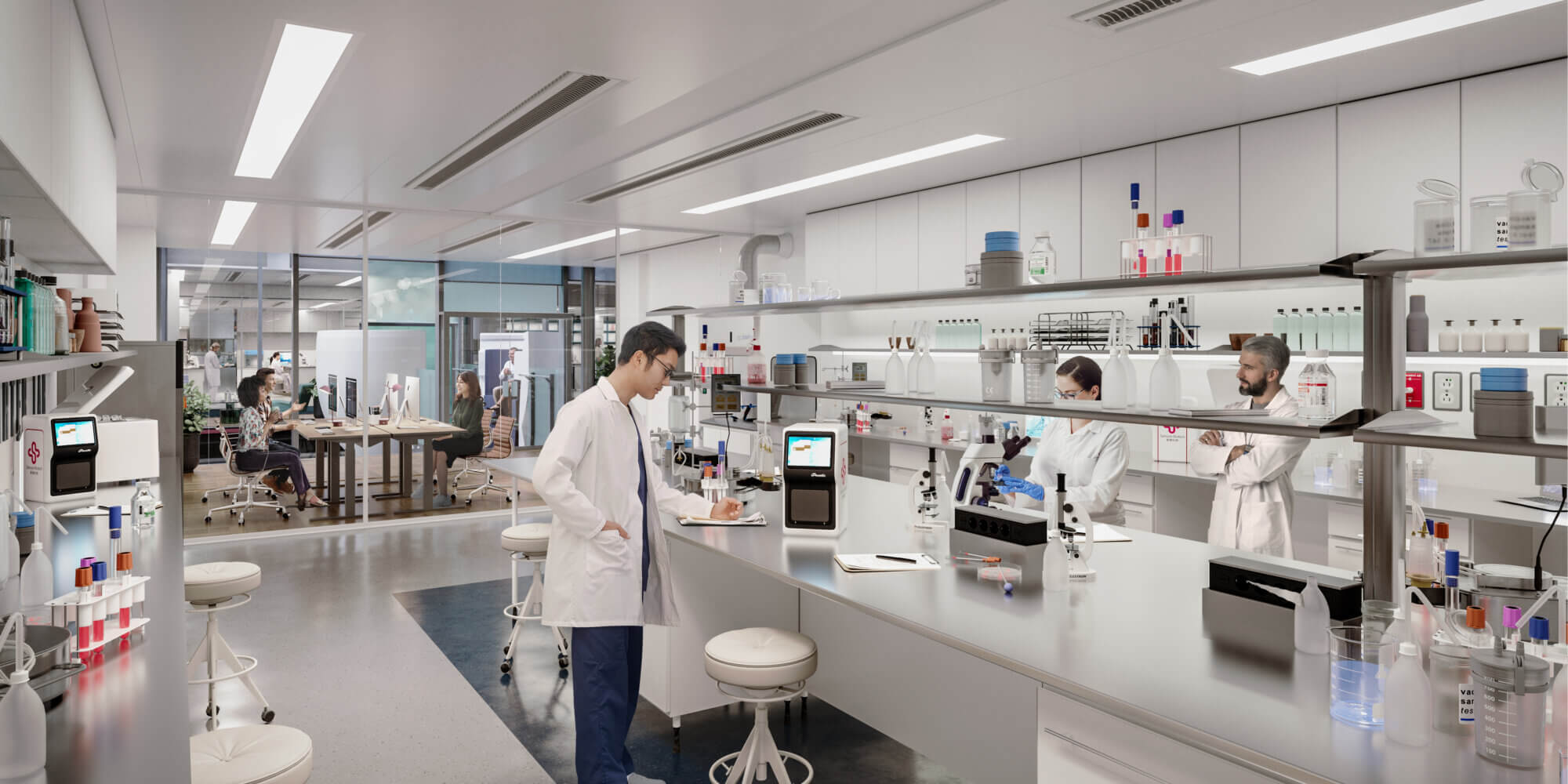Beyond Four Walls: Catering to Researchers in Real Estate

Beyond Four Walls: Catering to Researchers in Real Estate
Scientist-Centric Design:
Unlike many companies with common needs like desks, meeting rooms, and breakout areas, the world of science is vastly different. Ensure that the lab supports smart workflows and can adapt to various lab types.
State-of-the-art Facilities:
Scientists can quickly discern a genuine state-of-the-art lab from the rest, mere claims of cutting-edge equipment fall short. Developers and owners must showcase their expertise by providing specialized labs with features like clean rooms, high biosafety levels, mass spectrometry facilities, and more, tailored to meet specific research needs.
IT Infrastructure:
The ability to protect and patent research findings is paramount and thus, good IT infrastructure is indispensable. By providing robust data management and security systems, researchers can better safeguard intellectual property and sensitive research data.
The ideal working environment:
Heating, ventilation, air conditioning, and lighting tailored to the lab’s purpose, all play a part in creating a safe and comfortable working environment. Beyond the lab, areas designated for relaxation and restoration are just as crucial as they are in any other workplace, promoting the overall well-being of researchers.
Safety and regulatory standards:
By ensuring that the facility complies with all relevant standards, including chemical management, biosafety cabinets, fire protection, and emergency equipment, administrative burden is removed from researchers.
Sustainable practices:
As many chemicals and materials used in scientific research can be hazardous to both human health and the environment, proper waste management is crucial. Ensures that there is a proper system for how hazardous materials are handled, stored, and disposed of safely, minimizing the risk of accidents and exposure.
Tenant satisfaction:
The importance of client support and feedback mechanisms becomes pivotal in ensuring a low client churn rate. It is essential to demonstrate in a tangible manner how ongoing support and continuous improvements will be offered to keep your tenants satisfied as they continue to evolve and grow.
Collaboration:
Areas for formal and informal collaboration, within the facility, encourages interdisciplinary interactions and idea sharing among researchers. By providing seminars, workshops, and networking events, the value of your facilities will be counted beyond price per sq ft²/m².
As life science and scientific research continue to shape the future, developers and owners must keep pace with the ever-evolving needs of the scientific community. The laboratories of tomorrow must be designed to empower researchers, foster innovation, and drive meaningful progress, we’re more than happy to help start conversations in the right way, with the right visual material.





